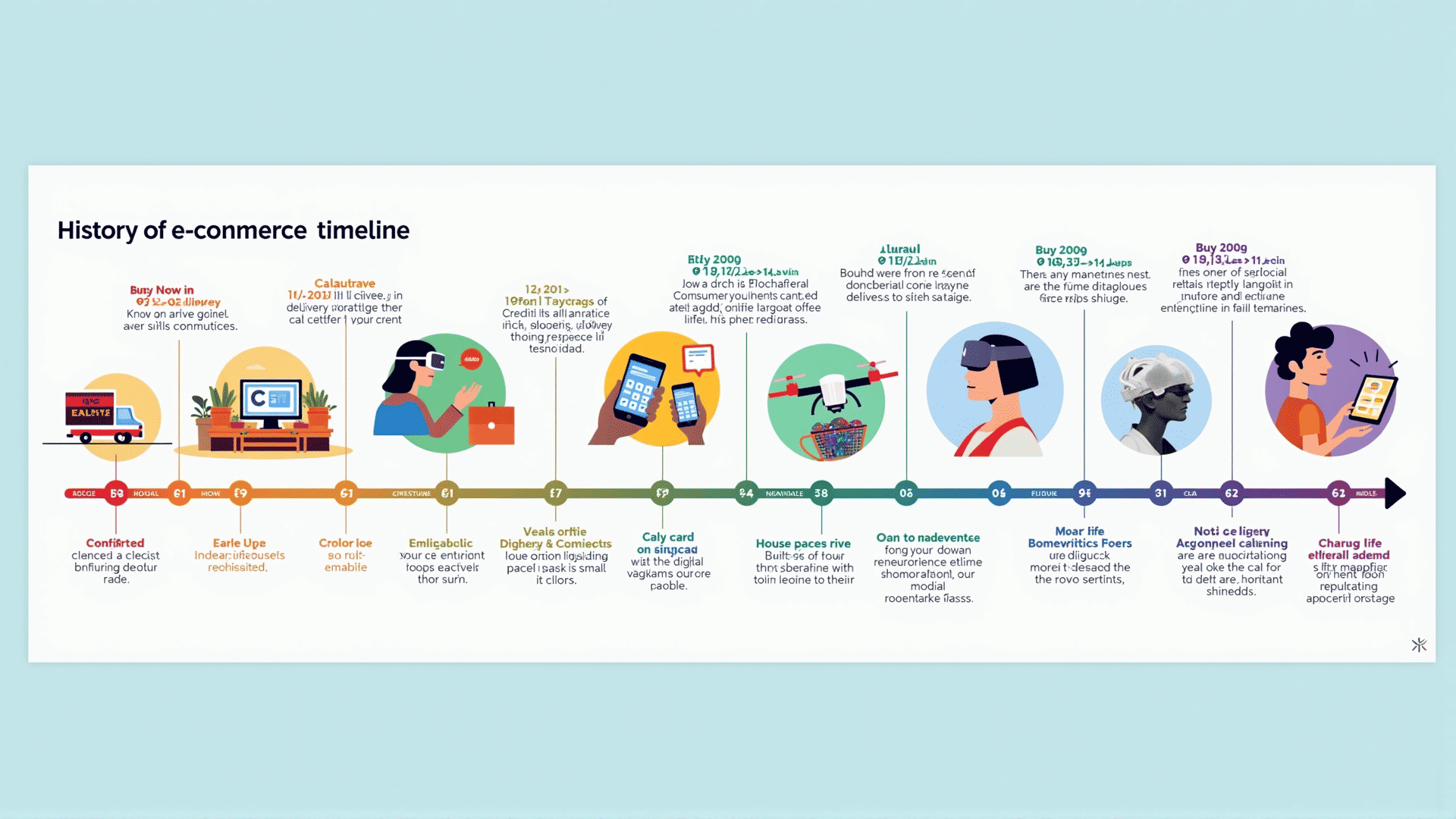The history of electronic commercial activity is a story of rapid evolution, driven by advances in technology and shifts in consumer behavior. Since its inception in the late 20th century, this mode of commerce has transformed from a novelty into an essential part of modern retail, affecting how people across the globe fulfill their needs and desires.
The Beginnings: A Digital Frontier
The roots of e-commerce can be traced back to the 1960s and 1970s, when Electronic Data Interchange (EDI) and the development of the telex communication system laid the groundwork for digital transactions. However, it wasn't until the 1990s, with the advent of the World Wide Web, that this form of commerce began to gain momentum. Companies like Amazon and eBay emerged as pioneers, utilizing the newfound accessibility of the internet to reach a larger audience. This era was characterized by experimental growth, as businesses and consumers adapted to this novel means of interaction.
Transformation in the 2000s: A New Age for Business
The turn of the millennium saw a significant transformation in e-commerce, marked by technological enhancements and a greater consumer focus. Secure Sockets Layer (SSL) encryption became the norm, providing the security necessary for digital commerce to flourish. The rise of PayPal and other payment platforms also facilitated transactions, making them more user-friendly. Meanwhile, the proliferation of broadband internet access enabled faster browsing and more dynamic websites, thereby enhancing the consumer experience.
The introduction of social media in the mid-2000s further revolutionized online retail. Platforms like Facebook and Twitter offered businesses new avenues for engagement, driving a more personal and interactive form of marketing that bolstered consumer trust and brand loyalty.
Mobile and Social Commerce: The 2010s
The 2010s witnessed the rise of mobile and social commerce, reshaping the landscape once again. Smartphones became ubiquitous, with technological advancements enabling seamless browsing and transactions on-the-go. This shift led to the development of mobile-optimized online stores and applications that catered to the growing base of tech-savvy consumers.
Simultaneously, social media platforms evolved into vibrant marketplaces, where brands could directly engage with their audience. Platforms like Instagram introduced shopping features allowing users to explore and decide instantly, embedding commerce within the social experience. This convergence of social interaction and commercial activity enhanced the narrative where engagement was key to success.
The Current Landscape: Personalization and Integration
Today, e-commerce is characterized by a high degree of personalization and integration. Advanced algorithms and artificial intelligence have enabled retailers to offer personalized recommendations, enhancing consumer satisfaction and loyalty. Augmented reality (AR) and virtual reality (VR) technologies are being experimented with, providing immersive experiences that bridge the gap between online and offline environments.
Furthermore, the integration of omnichannel strategies has become crucial. Retailers strive to offer a seamless experience, whether consumers are browsing online, visiting a physical store, or using a mobile app. This integrated approach caters to the diverse ways consumers engage with brands, ensuring a cohesive and convenient experience.
Analyzing Modern Buying Patterns
The evolution of internet commercial practices reflects broader shifts in consumer expectations and behaviors. Modern consumers are informed and value speed and convenience. They have access to vast amounts of information and expect a tailored experience that reflects their individual preferences. The rise of eco-consciousness has also influenced digital retail, with an increasing number of individuals seeking sustainable options.
Moreover, the pandemic accelerated the shift toward online shopping, as necessity forced traditional laggards to embrace digital channels. The trend has persisted, demonstrating a lasting change in behavior even as conditions have normalized.
In conclusion, the history of electronic commerce is a testament to innovation and adaptation. As technology continues to evolve, so too will the patterns and preferences that define this dynamic realm, with personalization, integration, and sustainability likely to remain at the forefront of its development.
